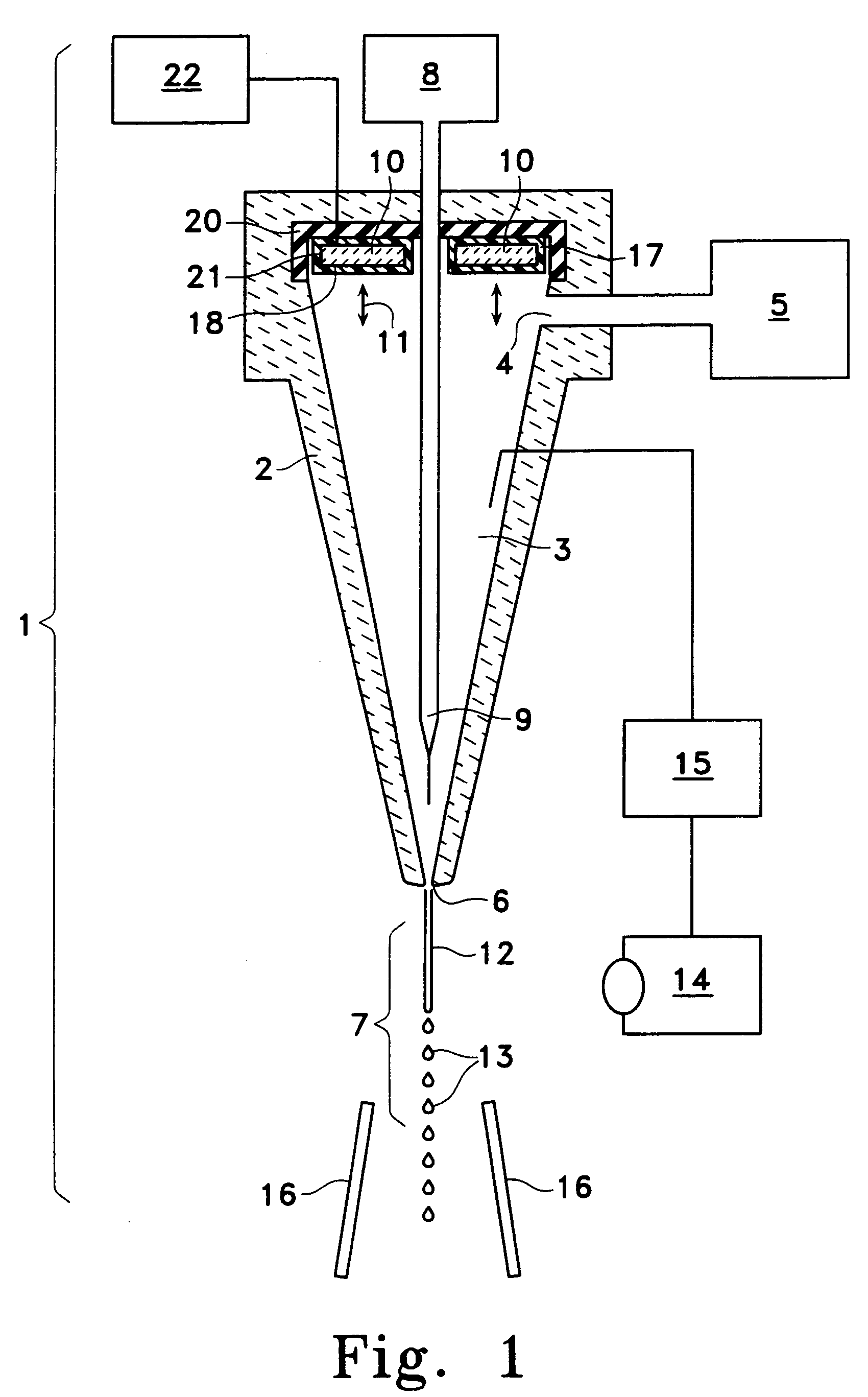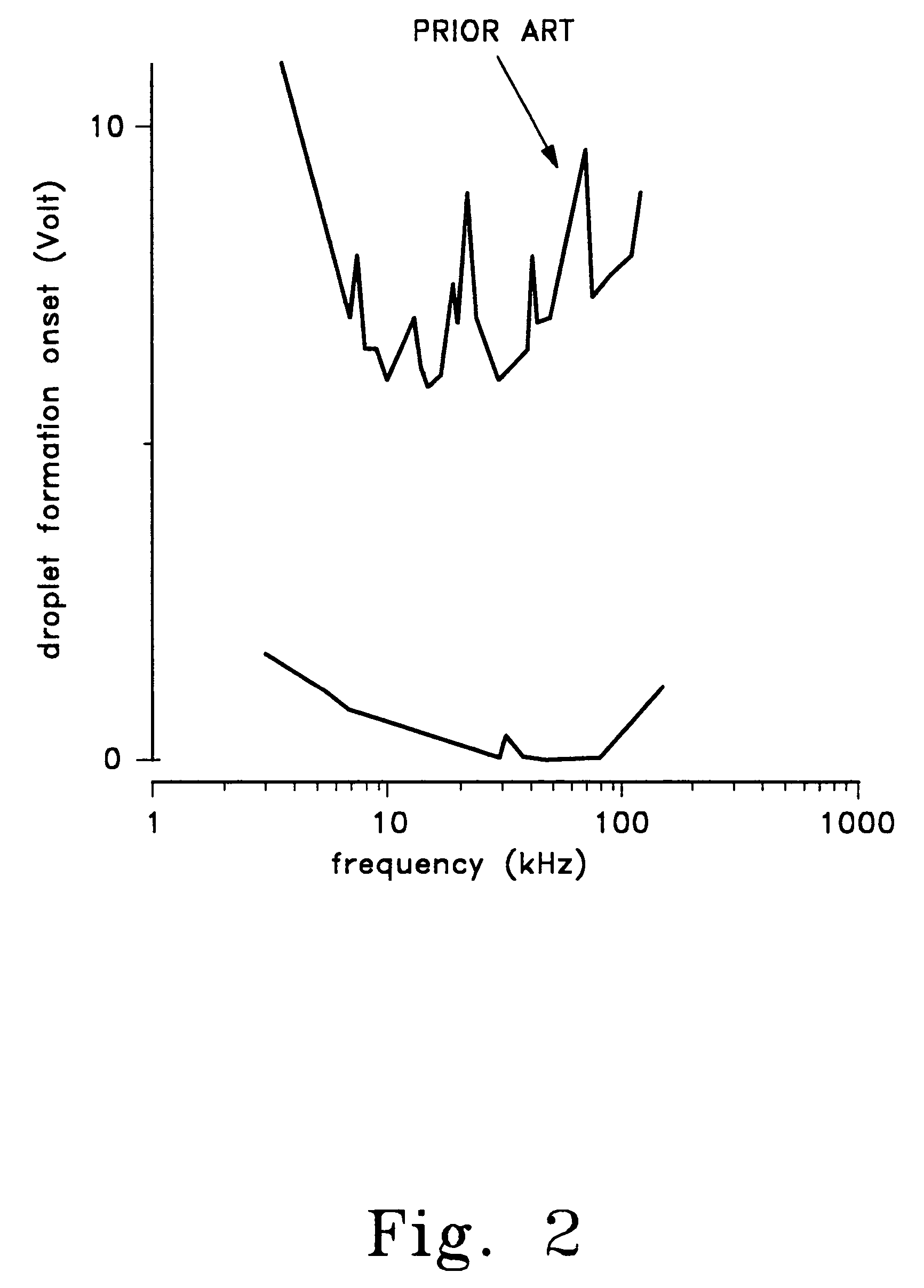Droplet formation systems for flow cytometers
a flow cytometer and droplet technology, applied in the field can solve the problems of difficult to achieve processing rates, difficult to deal, and difficult to practically achieve processing rates, and achieve the effect of enhancing the amplification of oscillation and increasing the performance of droplet flow cytometers
- Summary
- Abstract
- Description
- Claims
- Application Information
AI Technical Summary
Benefits of technology
Problems solved by technology
Method used
Image
Examples
Embodiment Construction
[0022]As mentioned, the present invention involves an improved flow cytometer droplet nozzle system which incorporates a variety of features. As shown in FIG. 1, the flow cytometer system (1) involves nozzle container (2) which establishes nozzle volume (3). Nozzle volume (3) is supplied a liquid by sheath fluid port (4) which acts to introduce a sheath fluid from some sheath reservoir (5). During operation, the sheath fluid flows through nozzle container (2) and out nozzle exit (6) into free fall area (7).
[0023]Since the sheath fluid is typically an unreactive substance such as a saline fluid and is an analytically transparent, it has introduced within it some desirable substance such as cells or parts of cells or other items. This substance is maintained in substance reservoir (8) and is introduced to nozzle volume (3) through substance introduction port (9). Through hydrodynamic focusing, the substance flows and is separated into single cell units within the sheath fluid and exit...
PUM
 Login to View More
Login to View More Abstract
Description
Claims
Application Information
 Login to View More
Login to View More - R&D
- Intellectual Property
- Life Sciences
- Materials
- Tech Scout
- Unparalleled Data Quality
- Higher Quality Content
- 60% Fewer Hallucinations
Browse by: Latest US Patents, China's latest patents, Technical Efficacy Thesaurus, Application Domain, Technology Topic, Popular Technical Reports.
© 2025 PatSnap. All rights reserved.Legal|Privacy policy|Modern Slavery Act Transparency Statement|Sitemap|About US| Contact US: help@patsnap.com



